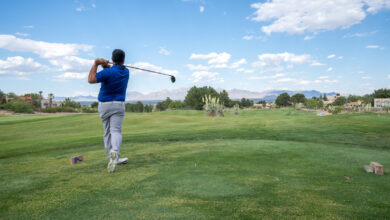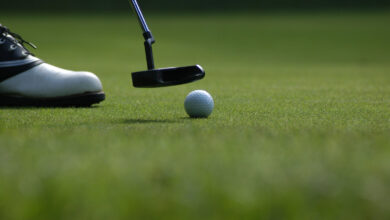The Impact of Club Selection on Your Shot: A Guide for Amateur Golfers
Hey there, fellow golf enthusiasts! Whether you’re just starting out on the fairways or have been playing for a while, understanding how to select the right club can seriously elevate your game. Club selection isn’t just about the number on the club; it’s about making an informed choice that’ll help you hit the ball with confidence and accuracy.
Know Your Clubs
First things first, familiarise yourself with the different types of clubs in your bag. In general, you’ve got three main categories: woods, irons, and putters.
- Woods (like your driver and fairway woods) are primarily used for long-distance shots.
- Irons (numbered from 3 to 9, along with pitching wedges) are more versatile and suit different situations, especially for approach shots.
- Putters are, well, specifically for putting on the green.
Each club serves a unique purpose, so understanding their functions is the first step towards making better choices on the course.
Distance Matters
One of the biggest factors in club selection is distance. Each club is designed to hit the ball a specific distance. For instance, a driver is built for those long tee shots, while an 8-iron will take you closer to the green.
Before you head out, get to know your average distances for each club. Spend some time at the driving range testing how far you can hit your clubs consistently. This bit of prep work will help you make smarter decisions during your round.
Consider the Course Conditions
The course layout and weather conditions play a significant role in club selection. Is it dry and firm? You might gain a bit of extra distance. Is it damp? You might want to count on a little less yardage.
Also, take note of the wind. A strong headwind may require a more robust club to ensure your shot gets where it needs to go, while a tailwind might mean you can afford to club down.
Assess the Lie
Where the ball ends up affects how you select your club.
- Tee Shots: When your ball’s on the tee, you might instinctively reach for your driver. However, if you’re not confident, a 3-wood can offer more control.
- Fairway Lies: If your ball is sitting nicely on the grass, you can use almost any club, but remember to choose one that suits your distance and desired trajectory.
- Rough Lies: If your ball is in the rough, you’ll need to consider a club that can cut through the thicker grass.
Understanding how your lie affects shot selection can save you from mishitting and losing distance.
Course Strategy
Think about your strategy before selecting a club. Are you aiming for the green, or do you want to set yourself up for an easier next shot? Sometimes, it’s wise to lay up and choose a club that places you in a better position rather than going for the flag with every shot.
Confidence is Key
Finally, and perhaps most importantly, pick a club that you feel confident with. If you’ve been working on your 7-iron and have been hitting it well, trust it! Golf can be as much about mental game as physical ability. Confidence in your club can lead to better execution.
Summary
Selecting the right club is essential for improving your golf game. Familiarise yourself with each club’s purpose, know your distances, and always consider factors like course conditions and your ball lie. Develop a strategy for your approach, and above all, select the club that gives you confidence.
So next time you’re standing on the tee or in the fairway, take a moment to think about your choice. A little bit of thought can lead to a lot more fun on the course. Happy golfing!




